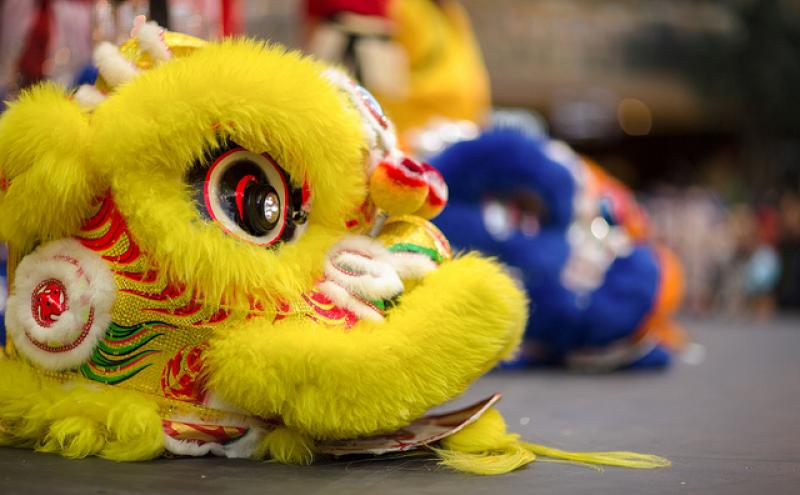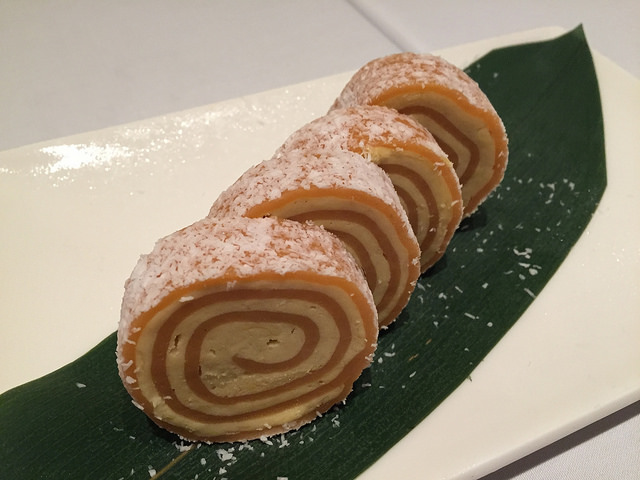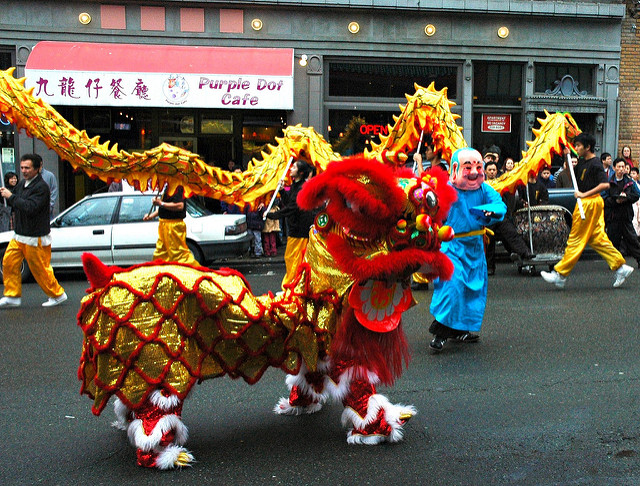
On February 5th, millions around the world will be ushering in the Lunar New Year. Although it’s often referred to as Chinese New Year, many other cultures celebrate this holiday and it’s not celebrated homogenously throughout the vastly diverse Chinese diaspora of the world!
What we know as the Lunar New Year marks the beginning of the year on the Chinese lunisolar calendar which is informed by movements of the sun and the moon. This calendar has been used for roughly 5,000 years! In ancient Asia, the New Year marked a time when farmers could take a break from their work in the fields, as it is considered the first day of Spring (although it probably won’t feel anything like Spring here in Seattle that early!). Ever since China adopted the Gregorian calendar, the Lunar New Year has become known as the Spring Festival, and it lasts for around 23 days.
Each year — and those born in that year — is characterized by an animal from the zodiac, although the 12 animals in the zodiac vary between different cultures. In the Chinese zodiac, the one most recognized in the U.S. and the same one used in Korea and Taiwan, the animals include a rat, ox, tiger, rabbit, dragon, snake, horse, sheep, monkey, rooster, dog, and pig. One legend of this zodiac that explains the order of the animals is that they were participating in an emperor’s race.
Today, most celebrations of Lunar New Year are a way to reunite the family, sweep out bad fortune, and make room for a prosperous future.
Common Traditions
China

- Houses are thoroughly cleaned in advance to purge ill will and make the home presentable for guests.
- The millions of people that travel to celebrate the Lunar New Year with friends and family make up the world’s largest seasonal human migration. When at last families are reunited, they share a hearty meal with many kinds of meats and fish. Uncut noodles are eaten to signify a long life. In Northern China, dumplings are shared because their appearance is similar to ancient Chinese currency. Another favorite traditional food is niangao, the sweet, sticky new year cake.
- In addition to the feast, firecrackers are lit so that the loud noises will scare off evil spirits. For the same reason, martial artists will visit homes and businesses to perform lion dances accompanied by a loud drum. Often confused for dragons, lion dances only require two performers under the lion’s skin; dragons are longer and involve many more performers. Both are mythical creatures that symbolize good fortune.
One of my favorite traditions is the exchange of lucky red envelopes filled with crisp, new bills as a sign of good luck and prosperity. Usually these are just for children or unmarried young adults. In modern times, these envelopes can be found decorated with popular characters like Peppa Pig and Winnie the Pooh!
Vietnam
In Vietnam, the holiday is known as Tết.
- Many of the traditions are similar to the celebrations in China, but Vietnam contributes the unique and beautiful practice of using many golden blossoms in their New Year decoration, including yellow apricot blossoms (hoa mai), chrysanthem
ums, and marigolds.
Some of my favorite Vietnamese treats feature prominently in Tết celebrations, including bánh tét (sticky rice cake roll) and xôi gấc (colorful sticky rice).
Korea
In Korea, the holiday is known as Seollal.
- This special day is marked by wearing new hanbok, the traditional formal attire of Korea.
- Instead of receiving new money in red envelopes, Korean communities use decorative drawstring pouches.
North America
In North America, lively parades have become a central part of the celebration. Here, it blends with markers of a vast variety of cultural communities: Korean-fusion taco trucks and modern western music make for uniquely American Lunar New Year celebrations at parades and festivals throughout the continent.
Seattle celebrations include an annual Tết festival at the Seattle Center and a variety of cultural performances and food offerings in the Chinatown-International District. Also see the Stranger’s List of Lunar New Year Things to Do.
2019 is the year of the Pig, and in many Asian cultures the Pig is a symbol of wealth. Could that possibly mean that this is a good year to invest and make money? Or will your wealth take the form of other, non-financial abundances? In any case, I hope this year of the Pig will be a prosperous one filled with good food and quality family time for you!

Sea-Tac Celebrations
Join us for Lunar New Year Celebrations at Sea-Tac Airport on February 19. Here’s what’s happening
Post-security
Activities post-security for traveling passengers:
- 12:00 p.m. kick off featuring a Port of Seattle Commissioner and airport executives
- Dancing and entertainment in the North Satellite, Central Terminal and South Satellite
- New restaurant openings
- Special gifts for Sea-Tac Airport travelers distributed in the terminal
Pre-security
Sea-Tac Airport is partnering with the Wing Luke Museum of the Asian Pacific American Experience on a collection of art that showcases the celebrations and traditions of Lunar New Year. Passengers and visitors can view the collection before security on the south end of the ticketing level of Sea-Tac Airport throughout the month of February.
Top photo credit: IQ Remix, Creative Commons Attribution license , no changes made.





